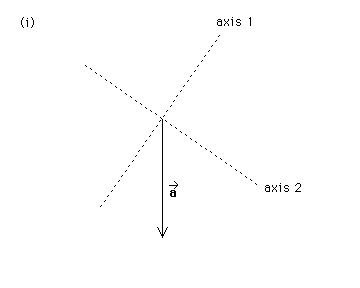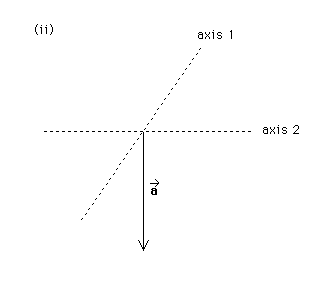
Past questions issued on August 9, 1996, August 16, 1996, August 23, 1996, and August 30, 1996 are listed below.
Physics 205, Physics 215, Astronomy 211 - A swimming pool can be filled with two water pipes. Pipe A alone is able to fill the pool in one hour. Pipe B alone is able to fill the pool in two hours. Pipes A and B together are able to fill the pool in
(a) 1.5 h
(b) 30 min
(c) 20 min
(d) 40 min
(e) 3 h.
Answer.Physics 205, Physics 215, Astronomy 211 - Assume the moon is a perfect sphere. Somebody puts a rope tightly around the equator of the moon so that no space is left between the rope and the moon's surface. Then he cuts the rope, inserts 1 m of rope between the two ends of the cut rope, and redistributes the rope around the equator so that it has an equal distance everywhere from the surface of the moon. (Circle properties. Algebra.)
The distance between the rope and the moon now is
(a) enough for a cat to squeeze through under the rope
(b) just barely enough for a mouse to squeeze through under the rope
(c) not nearly enough for a mouse to squeeze through
(d) impossible to say without knowing the moon's diameter.
Answer.Physics 205, Physics 215, Astronomy 211 - For this question you need to use the definition of average speed. The definition is as follows.

Suppose somebody drives from city A to city C via city B without stopping. The distance d from city A to city B is equal to the distance from city B to city C. Suppose also that the driver maintains an average speed of 80 km/h between cities A and B, but wants her average speed for the entire trip from city A to city C to be 100 km/h. What must be her average trip during the second part of the journey, from city B to city C? (Algebra).
This problem is not as easy as it may look. The answer is not 120 km/h. Do the problem in two ways.
(a) Assume that d = 40 km. Work out the time for the trip from A to B. Then work out the total travel time, given the overall average speed and total distance from A to C. From these two times you can find the travel time for the part of the trip from B to C. Now you can calculate the average speed for this part of the trip.
Answer.(b) Now do the entire calculation in symbols, assuming no special value for the distance d. Show that the answer is independent of d.
Answer.Physics 215 - For this week's question, you need to have a bit of background on vectors. You may not have studied vectors before. In that case, look up vectors for a brief introductory lesson that will provide the necessary background including an explanation of the notation used here. You should also review the July 19 and August 2 questions.
(a). The following diagram (i) shows a vector a* and two stippled axes. Find a vector b* along axis 1 such that c* = a* + b* is along axis 2. (Vectors).

(b). The following diagram (ii) shows the same vector a* as in diagram (i) and two stippled axes, one of which is different from that in diagram (i). Again, find a vector b* along axis 1 such that c* = a* + b* is along axis 2. (Vectors).

(c). Suppose the angle between vector a* and axis 1 is equal to 20 degrees. Suppose also that the length of an arrow represents the magnitude of the corresponding vector. Take the magnitude a of vector a* to be equal to 10. Calculate the magnitudes of vectors b* and c* = a* + b* in cases (i) and (ii). Write your answers in the form of equations using the appropriate symbols. (Trigonometry).
Answer.